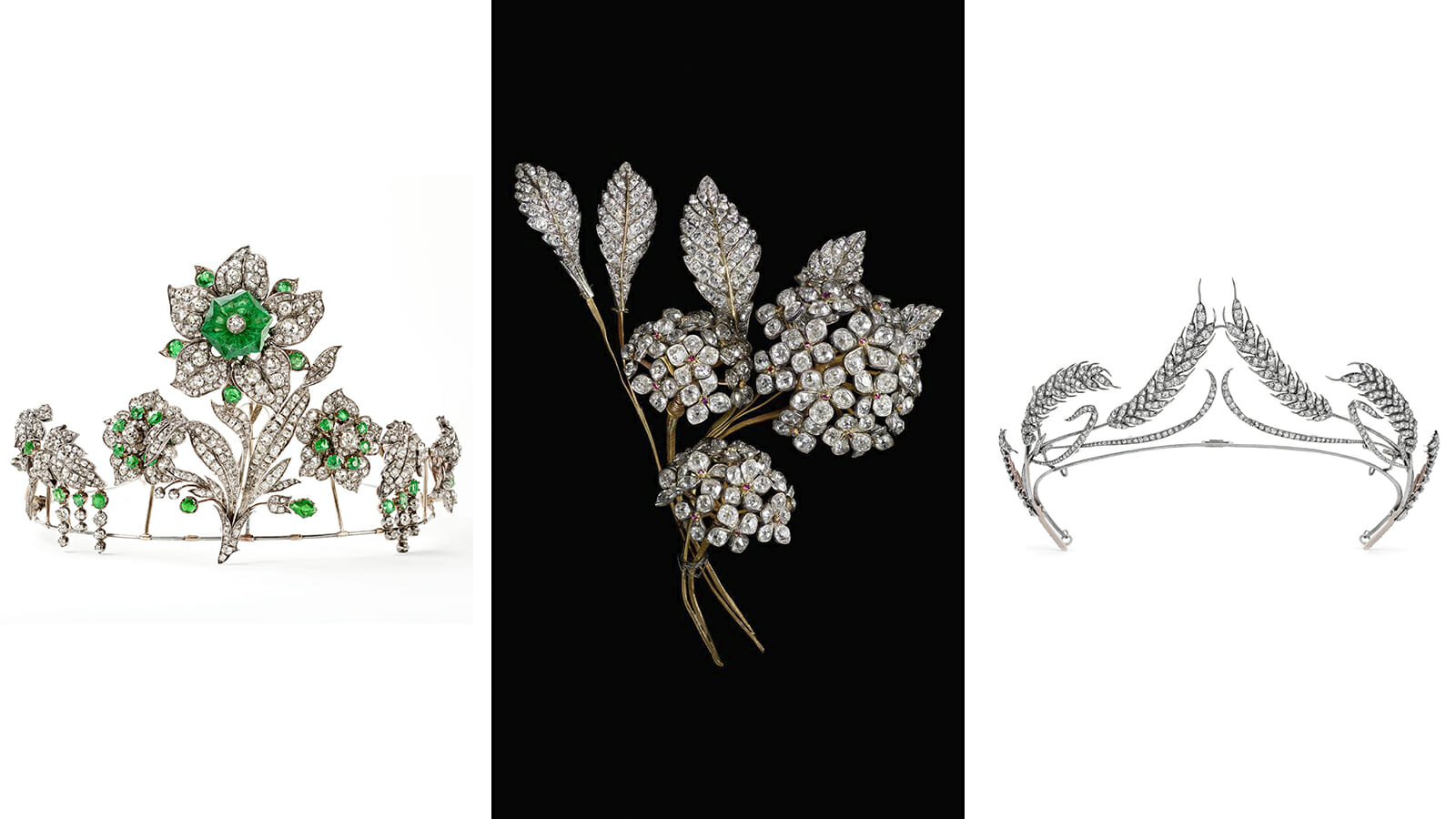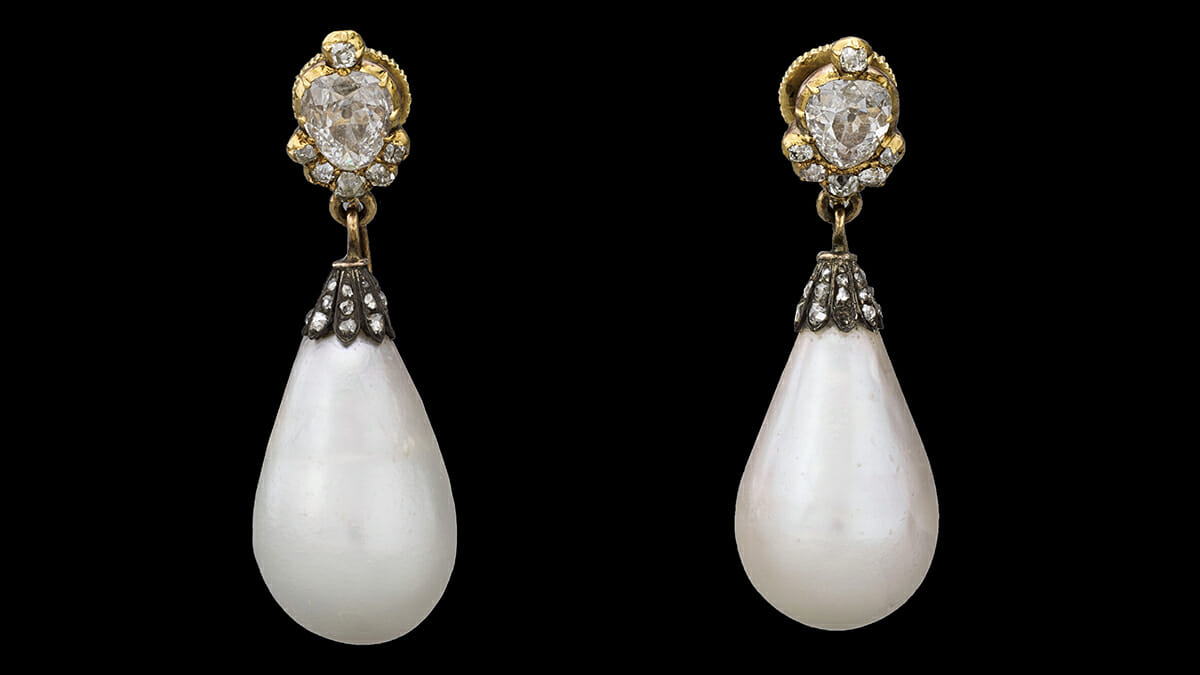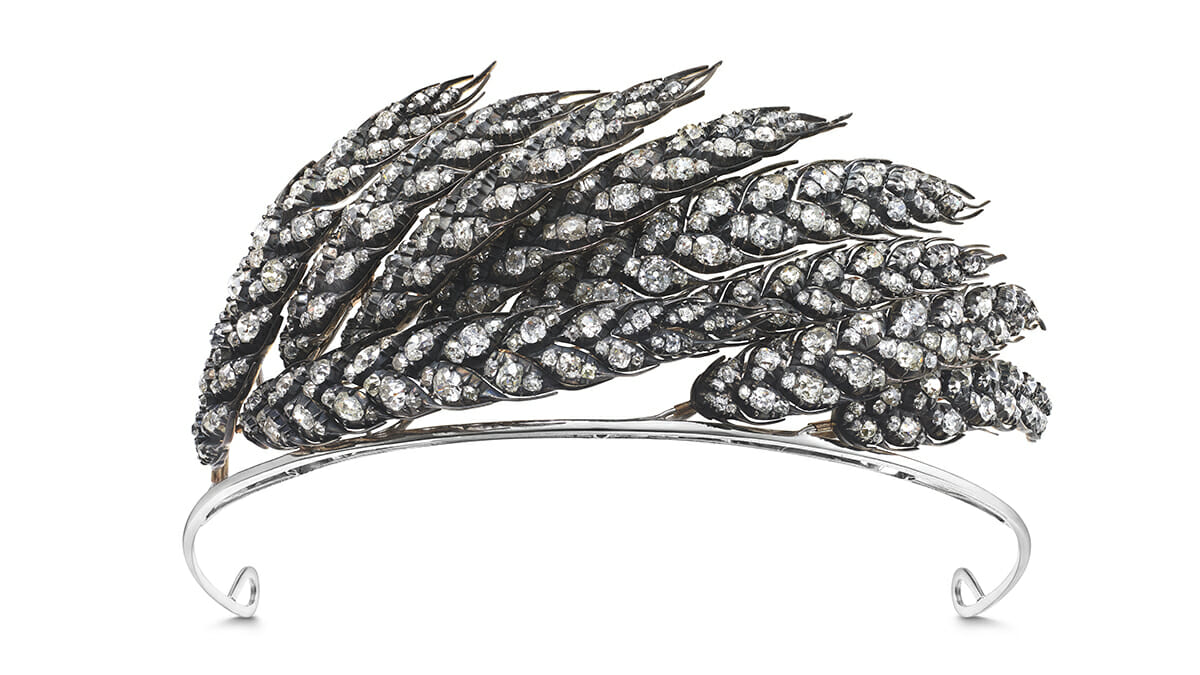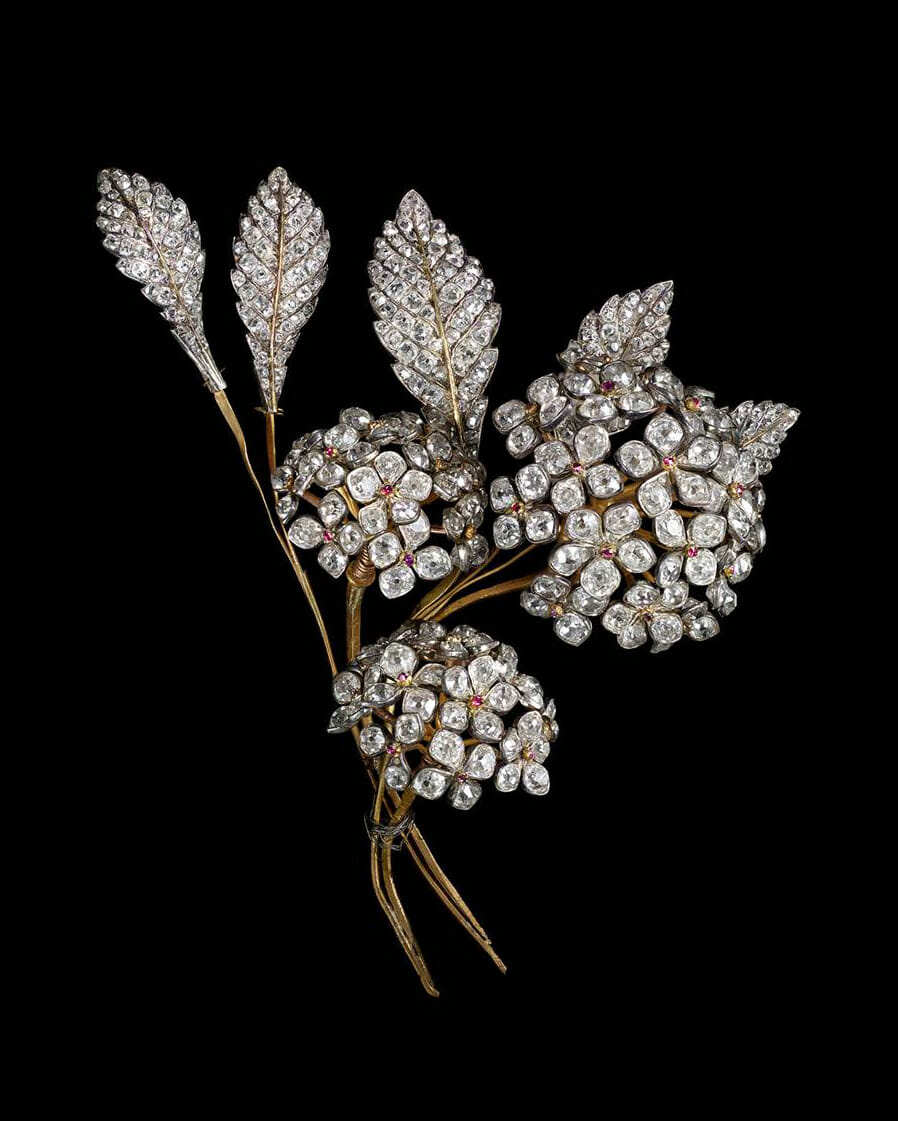6 Must-See Diamond Jewelry Pieces in Chaumet’s New “Joséphine and Napoléon” Exhibition
Discover the historic pieces that inspire Chaumet’s contemporary diamond jewelry creations.

In Chaumet’s 241-year history, two French figures remain the house’s greatest influence: Joséphine and Napoléon. Just last year, the Maison’s Paris flagship debuted a redesign largely inspired by the legendary French couple—even its staircase is engraved with excerpts from their love letters. It is, therefore, no surprise that as the country commemorates the bicentennial of the emperor’s death with exhibitions around Paris and beyond, Chaumet is the only private company to have been invited to join the festivities with a diamond jewelry exhibition of its own.
Chaumet’s New “Joséphine and Napoléon” Exhibition features jewelry pieces rarely exhibited to the public.
“Joséphine et Napoléon, une histoire (extra)ordinaire,” on view from May 19 to July 18 at Chaumet’s 12 Vendôme hôtel particulier, traces the “extraordinary story” of the couple’s relationship through more than 150 pieces of fine art, documents and correspondence, and, of course, exquisite and historic diamond jewelry. Most pieces have rarely been exhibited, and several are on loan from esteemed institutions, including the Château de Fontainebleau, Musée Carnavalet and Musée du Louvre.
“Joséphine is, today, considered a grandmother of Europe because of her blood ties to many European monarchs,” says the exhibition’s curator, Pierre Branda, also Head of Heritage for the Fondation Napoléon. As for what defined the emperor and empress’ jewelry predilections, Branda tells the Natural Diamond Council, “a certain taste for a modernization of the way of wearing diamonds.”
Indeed, Joséphine was the ultimate 19th century trendsetter, renowned for her lavish taste and spending in everything from fine art to jewelry—but her image was largely cultivated by Marie-Etienne Nitot, who founded Chaumet in 1780 (then known as Nitot & Fils). After making acquaintances with Nitot’s son, François-Regnault in 1805, Nitot became Joséphine’s and Napoléon’s imperial jeweler of choice.
Together, the trio created jewels whose distinct combination of grandeur, romance, sentimentality and nature continue to shape Chaumet’s glittering legacy today. Below, discover key historic diamond jewelry pieces that started it all.

1. Pair of Gold, Silver, Natural Pearls and Diamond Earrings
Setting the scene at the entrance of the exhibition are dramatic portraits of Joséphine and Napoléon in their coronation robes which instantly convey the relationship between fashion, adornment and power. Enthroned beside the imperial crown, the empress dons a full suite of jewels, several of which feature pear-shaped pearls. This cut is known to have been a favorite of Joséphine’s, and both historical jewels in the exhibition, as well as Chaumet’s contemporary creations are testament to this preference. Just this April, Chaumet debuted a 13-piece addition to its Joséphine collection, which centers around pear cut stones.
Bringing the painting to life is Joséphine’s pair of 19th century pearl and diamond earrings, on loan from the Louvre, which famously houses Napoléon’s 140.6 carat Regent diamond that once decorated his coronation sword. Also being exhibited is a double-strand necklace suspending seven baroque pear-shaped diamond-capped detachable pearls that Joséphine likely gifted to her daughter-in-law, Augusta-Amelie of Bavaria. Convertibility remains a significant feature of Chaumet’s jewels today.

2. The Wheatsheaf Tiara
Diamonds naturally adorn many of the couple’s jewels and accessories, but the clear standouts are what Chaumet is most known for: tiaras. A dazzling selection is on permanent display in the Salon des Diadèmes, currently staged to focus on Joséphine’s and Napoléon’s coronation.
After Joséphine began wearing tiaras, Nitot was inundated with requests, and together, the duo revitalized this adornment, which long stood as a symbol of power and the transmission of love. Tiaras followed the stylistic trends of neoclassicism and naturalism, and at her first official ceremony as sovereign, Joséphine was crowned with diamond ears of wheat. This circa 1811 wheat-ear tiara, featuring a sheaf of nine stalks delicately swaying in the wind, is similar to the one created for Joséphine.
Revered as a gift of the gods to mortals, wheat symbolized life, prosperity and fertility, and became one of Napoléon’s and Chaumet’s most prevalent motifs. Today, the Maison’s La Nature de Chaumet collection reinterprets four themes from nature: the ear of wheat, laurel, oak and lily, all connected to gods in classical mythology.

3. The Crèvecœur Tiara
Exhibited beside the Wheatsheaf tiara is the six-ears-of-wheat Crèvecoeur tiara, which Napoléon commissioned from François-Regnaut Nitot as a gift for Count Otto de Mosloy, the Strasbourg diplomat who allowed the emperor to marry his daughter, the future Empress Marie-Louise of Austria, in 1810. Though they continued corresponding throughout their lives—an indication of their enduring love for one another—Joséphine and Napoléon divorced due to the empress’s inability to produce an heir.
Napoléon chose a wheat motif for Fanny, the Countess of Mosloy, who was the daughter of Michel-Guillaume de Crèvecœur, a Norman aristocrat living in America who famously published the book, Letters from an American Farmer, as a reference to his passion for agriculture. The tiara remained in the Crèvecoeur family for four generations before being taken, in 1910, to Chaumet where it was remounted in the Belle Époque style for the fiancé of Jean de Crevecœur. As part of its modernization, the tiara was transformed so that the ears of wheat could also be worn as a corsage ornament.

4. The Leuchtenberg Tiara
At the end of Napoléon’s reign in 1815, François-Regnault Nitot went into exile and sold the business to another family, that of the firm’s master craftsman, Jean-Baptiste Fossin. Fossin was responsible for the emerald and diamond Leuchtenberg Tiara, which also reflects the heraldic legacy of exceptional jewels passed down to other family members.
Property of Queen Hortense, daughter of Joséphine and sister of Eugène de Beauharnais, this Romantic-style tiara—able to be converted into a brooch and six hair ornaments— was later part of the collection of George, Duke of Leuchtenberg, Eugène’s grandson.

5. Queen Hortense’s Brooch
A trained botanist, Joséphine developed a passion for gardening, as evidenced by Château de Malmaison, her home east of Paris where she resided after her divorce from Napoléon. She planted many exotic species there, rendering it one of the era’s finest gardens. Kangaroos, black swans and zebras were among the animals said to have roamed the grounds, which also famously housed a rose garden.
One of the floral-inspired jewels in the exhibition is this impeccably detailed Nitot et Fils’ circa 1807 brooch, which belonged to Queen Hortense, Joséphine’s daughter. Closely associated with the hydrangea, known as hortensia in French, she married Napoléon’s younger brother Louis, and their son became Napoléon III, Emperor of the French. In 1816, the queen donated the brooch to Einsiedeln Abbey in Switzerland as a token of gratitude for the congregation’s support after an unhappy love affair.

6. Empress Joséphine’s Acrostic Bracelets
Napoléon commissioned pieces from Nitot for his mother, his sister and the empresses to mark life’s milestones with jewels that spell secret messages. Each stone corresponded with a letter of the alphabet. as pictured here in bracelets spelling out Joséphine’s daughters names (“Hortense” is comprised of hessonite for H, opal for O, ruby for R, turquoise for T, emerald for E, nicolo for N, sapphire for S and emerald again for E).
This May Chaumet unveiled its Les Acrostiches Jeux de Liens collection where a loved one’s name or other messages can be similarly customized in rose gold bracelets. For most letters, there are two choices of stones, and inspiration can be honed from the Maison’s “Amour” bracelet composed of aquamarine, morganite, pink opal, green uvite and ruby.
